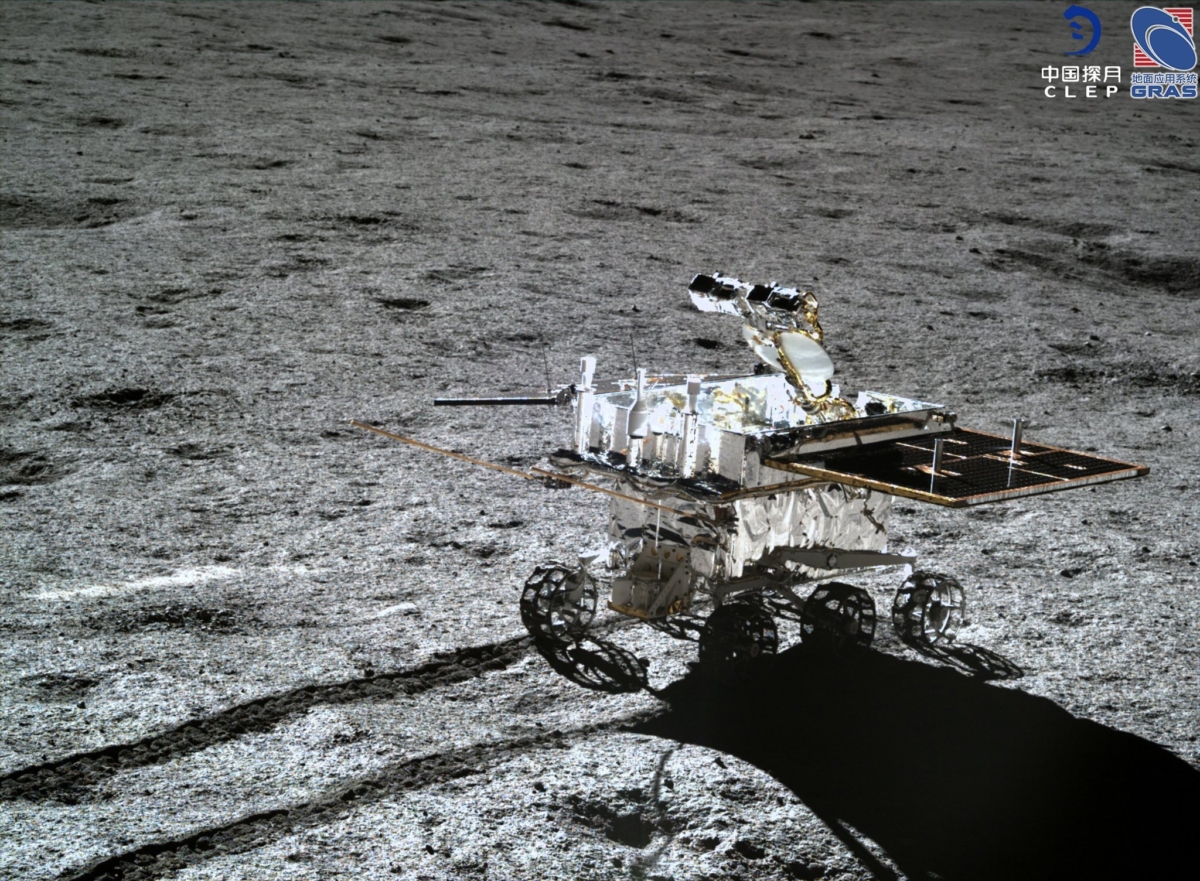China working on new moon rover for 2026 mission to lunar south pole
The new robot will be larger and more autonomous than Yutu 2, which is exploring the moon's far side today.
China is working on a new rover that will begin to explore the south pole of the moon around 2026.
The Chang'e 7 mission is part of a recently approved new phase of Chinese lunar exploration that will target the moon's south pole and far side. Chang'e 7 will consist of an orbiter, lander, rover and a small, flying detector that can move into shadowed craters to hunt for evidence of water ice. The mission will also be supported by a new communications relay satellite.
The mission's rover will build on the roughly 310-pound (140 kilograms) solar-powered Yutu and Yutu 2 rovers from the Chang'e 3 and Chang'e 4 moon landing missions, which touched down in 2013 and 2019, respectively. But there will be differences.
Related: The latest news about China's space program

"The rover of the Chang'e 7 is slightly larger than that of the Chang'e 4 in scale. It is designed to carry different instruments, and is of roughly the same structure," Chang'e 7 Deputy Chief Designer Tang Yuhua, of the Lunar Exploration and Space Engineering Center of China, told CCTV. The rover will also be more independent.
"It's more intelligent. The original rover had more ground intervention, and now the path planning will be more autonomous," Tang said.
The rover will carry a panoramic camera and a ground-penetrating radar like Yutu 2 but will have a magnetometer and a raman spectrometer, instead of the visible and infrared spectrometer and the energetic neutral atom analyzer instrument provided by Sweden for Yutu 2's mission.
Get the Space.com Newsletter
Breaking space news, the latest updates on rocket launches, skywatching events and more!
Chang'e 7 will also carry a second, smaller rover for the United Arab Emirates.
Before Chang'e 7, China will attempt to collect samples from the far side of the moon, within the South Pole-Aitken Basin, around late 2024 with its Chang'e 6 mission. The spacecraft was originally a backup to the 2020 Chang'e 5 mission, which collected samples from the lunar near side and delivered them to Earth.
Following this, Chang'e 8 is scheduled for launch in 2028 and is intended to test technologies for 3D printing and for using local resources. That mission is designed to set the stage for a project named the International Lunar Research Station (ILRS) in the 2030s.
The ILRS will initially be robotic but is intended to be capable of hosting astronauts for long-term stays from around 2035. China and Russia are seeking partners to join the endeavor.
Follow us on Twitter @Spacedotcom and on Facebook.
Join our Space Forums to keep talking space on the latest missions, night sky and more! And if you have a news tip, correction or comment, let us know at: community@space.com.

Andrew is a freelance space journalist with a focus on reporting on China's rapidly growing space sector. He began writing for Space.com in 2019 and writes for SpaceNews, IEEE Spectrum, National Geographic, Sky & Telescope, New Scientist and others. Andrew first caught the space bug when, as a youngster, he saw Voyager images of other worlds in our solar system for the first time. Away from space, Andrew enjoys trail running in the forests of Finland. You can follow him on Twitter @AJ_FI.









